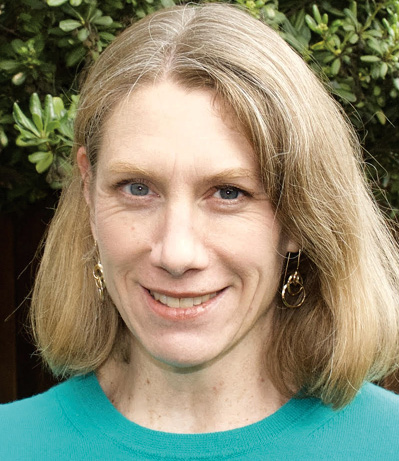

The main goal of the Children and Youth Behavioral Health Initiative (CYBHI) is to reimagine and transform how California supports children, youth and families. We want to create an equity-focused system in which young people can find support for mental health, wellness and substance use needs, where, when and in the way they need it most.
The initiative aims to break down the silos that exist across systems to build an ecosystem that supports our kids’ well-being, their ability to learn and thrive. That requires a more coordinated, more youth-centered system that is addressing inequities exacerbated by the pandemic. We know that all kids have been affected by the mental health crisis, and some groups are disproportionately impacted, like our BIPOC [Black, Indigenous and people of color] youth, our LGBTQ+ youth, our youth in foster care, our kids from underserved communities.
Ultimately, it’s about improving outcomes and well-being for all of California’s kids and youth ages 0 to 25. And a key part of achieving that goal is meeting kids where they are, like in our schools. Coordination between health and education is critical to reimagining the behavioral health ecosystem.
Another focus has been in learning, research, planning and design, so that we are tapping into the best information and experience. There are also some explicit components of CYBHI that are building on the collaboration between education and health, such as the new Student Behavioral Health Incentive Program. This program supports partnerships between Medi-Cal Managed Care plans and schools, so that together they can conduct a needs assessment and can develop joint, targeted efforts to increase access to behavioral health services in schools.
Other examples include a partnership between the state and all 58 county offices of education to strengthen social-emotional learning, and the development of trauma-informed training for educators led by the Office of the California Surgeon General.

There has been a growing mental health crisis among our youth for over a decade, and it was exacerbated by the pandemic. For example, suicide among youth between the ages of 10 and 18 increased 20 percent between 2019 and 2020. We know that educators are witnesses to this crisis on a daily basis. CYBHI is working to fundamentally change our systems, and this will take time. At the same time, we’re also taking action to support our youth right now. And because we are trying to build a more youth-centered equity-focused system, having their voices be our guiding light in this work is critical.
Youth have talked to us about how they are isolated and feel disconnected, and how they are looking for greater connection with both their peers and caring adults. They’ve talked about how stigma around mental health can make it harder to get access to the supports and services that they need. They’ve said they want accessible and affordable mental health services, including in schools.
Young people want more prevention services that support their well-being and intervention earlier — before they’re in crisis. They’re really looking for the system to meet that need for them much earlier. They want to be able to access non-clinical services that support their mental health and well-being — such as arts, yoga, mindfulness, different clubs and activities — they can do with their peers that support their mental health and well-being. And youth have also been clear about the importance of indoor spaces where they can be their full authentic selves and not be judged, and of outdoor spaces like parks or green spaces that are healing for them.
Young people need both adults and peers that they can turn to for support, and they want professionals in behavioral health to look like them, speak their language, come from their communities and understand their lived experience. They are asking us to employ a workforce that can meet that need.
Schools have a range of programs already in place that support students’ social and emotional needs and provide them with access to different kinds of behavioral health and physical health services themselves and through partners.
How do we work together to strengthen and expand those? One area is partnering with their Medi-Cal Managed Care plans through the Student Behavioral Health Incentive Program. Participating in that is an important way that schools can think about how to increase services to students. We also have a series of grants for scaling evidence-based practices, including in school settings, and the California Department of Public Health is developing a pilot program focused on how we respond to youth suicide and youth suicide attempts, including the important role of schools in the community response.
How important is inter-agency cooperation and working across different sectors in this kind of work?
When it comes to our kids, we have joint goals between schools and health. We want our kids to be well, we want them to be learning, thriving and reaching their fullest potential, and that involves their education, their health and behavioral health, and well-being.
One of the key aspects of CYBHI is an approach we’re developing called the School Linked Behavioral Health Services Fee Schedule, which will allow schools to be able to bill health plans, both for kids in Medi-Cal and those with commercial insurance, for a set of mental health, prevention, and substance use services linked to schools. As an example, we currently have a working group that’s made up of school representatives, health plan representatives and different kinds of behavioral health providers coming together to figure out how to make this fee schedule meaningful and impactful. We also host quarterly public webinars and provide regular written updates so that we keep interested individuals informed about the initiative.
The systems that serve our young people are full of committed people who want the best for kids. Yet, youth and families often tell us that they can’t access the services and supports that they need when they need them. And we hear from folks who are working in the systems that they feel like how we organize our systems creates silos and barriers that get in the way of people providing the support they want and know our kids need. Some of this is because our systems have been historically understaffed, under-resourced, and maybe haven’t had the cultural competency and capacity that they need to address the needs of all kids.
To truly meet the needs of kids and families, we need to work together in a more integrated way that is grounded in advancing equity, centering the needs of our youth, and building systems around it that truly allow and support for that. We know we need a larger behavioral health workforce that is more diverse and representative of our students.
The state is making significant investments in developing pipeline programs, and thinking about how we’re making sure that our scholarship and loan repayment programs are reaching new parts of the workforce. We are also developing a new virtual services platform that will go live in January 2024 to make it easier for kids, who we know are online, to access information, education, resources and tools. We’re working with youth to help design the platform so that it’s a safe, trusted space that they can use.
Another important piece is $65 million in funding that is going to county offices of education to be distributed to schools to support well-being, mindfulness and resilience for our students. It’s incredibly important that while we are doing more work on prevention and early intervention, that we are also working on how we provide more coordinated access for our youth with more intensive mental health and behavioral health needs and getting them the clinical services and supports they require.